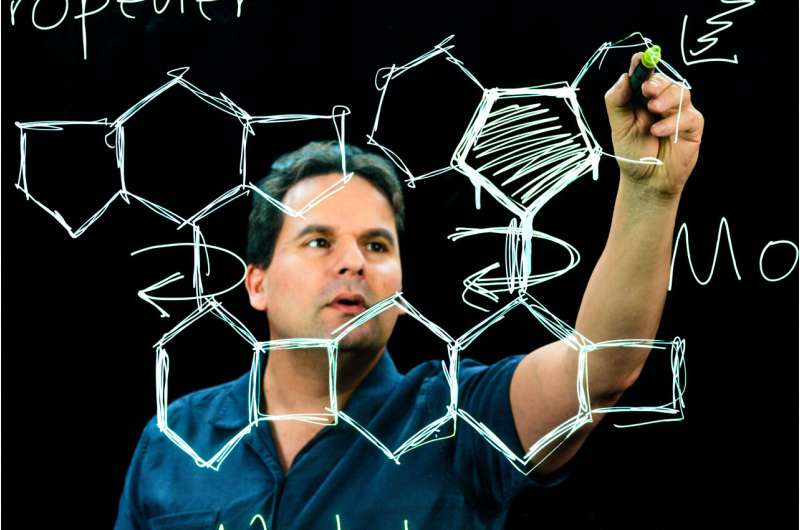This article has been reviewed according to Science X's editorial process and policies. Editors have highlighted the following attributes while ensuring the content's credibility:
fact-checked
peer-reviewed publication
trusted source
proofread
How to shift gears in a molecular motor

A study published in Chemistry—A European Journal presents a proof-of-principle design of molecular motors.
"Artificial molecular motors are molecules that absorb light from an external source, such as sunlight, and convert the energy in light into kinetic energy," says Bo Durbeej, professor at Linköping University (LiU), who led the study.
"Molecular motors" may sound like science fiction, but in the body there are many biological molecular motors that drive muscles and transport substances inside cells. Chemistry and nanotechnology researchers have long been aiming to develop artificial molecular motors, which may be useful in several areas in the future. Possible applications include using them to deliver medical drugs to the right place in the body or for storing solar energy.
But a motor on its own is not enough. A car having only a motor or an engine but no wheels would not get far. The power from the motor must be transferred—to the wheels, in the case of the car—and this is done via a gearbox. Similarly, the next step in this research field is to construct molecular gears that can transfer the kinetic energy from one part of a molecule to another. Future applications depend on being able to use the motion somewhere else than where it was created.
"Many scientists have long tried to construct molecular gears. We have developed a design principle for how to transfer the rotary motion to another part of a molecular system and have complete control over the direction of rotation. Previous designs have not been able to control the rotary motion," says Bo Durbeej.
A major challenge with developing a molecular photogear is that the part that you want to rotate, the "propeller," is attached to the rest of the molecule by a single bond. Single bonds rotate very easily, making it difficult to control directionality. But the LiU researchers have now succeeded in solving this problem by finding a functional combination of several factors, including the distance between the propeller and the part of the molecule that constitutes the "motor" itself.
The researchers have confirmed that their design works by doing calculations and advanced computer simulations on supercomputers at the National Supercomputer Centre in Linköping provided by the Swedish National Infrastructure for Computing, SNIC, and the National Academic Infrastructure for Supercomputing in Sweden, NAISS.
"We've now shown that our design principle works. The next step is to develop molecular photogears that are as easy as possible to synthesize," says Durbeej.
More information: Enrique M. Arpa et al, A Proof‐of‐Principle Design for Through‐Space Transmission of Unidirectional Rotary Motion by Molecular Photogears**, Chemistry—A European Journal (2023). DOI: 10.1002/chem.202303191
Journal information: Chemistry – A European Journal
Provided by Linköping University





















